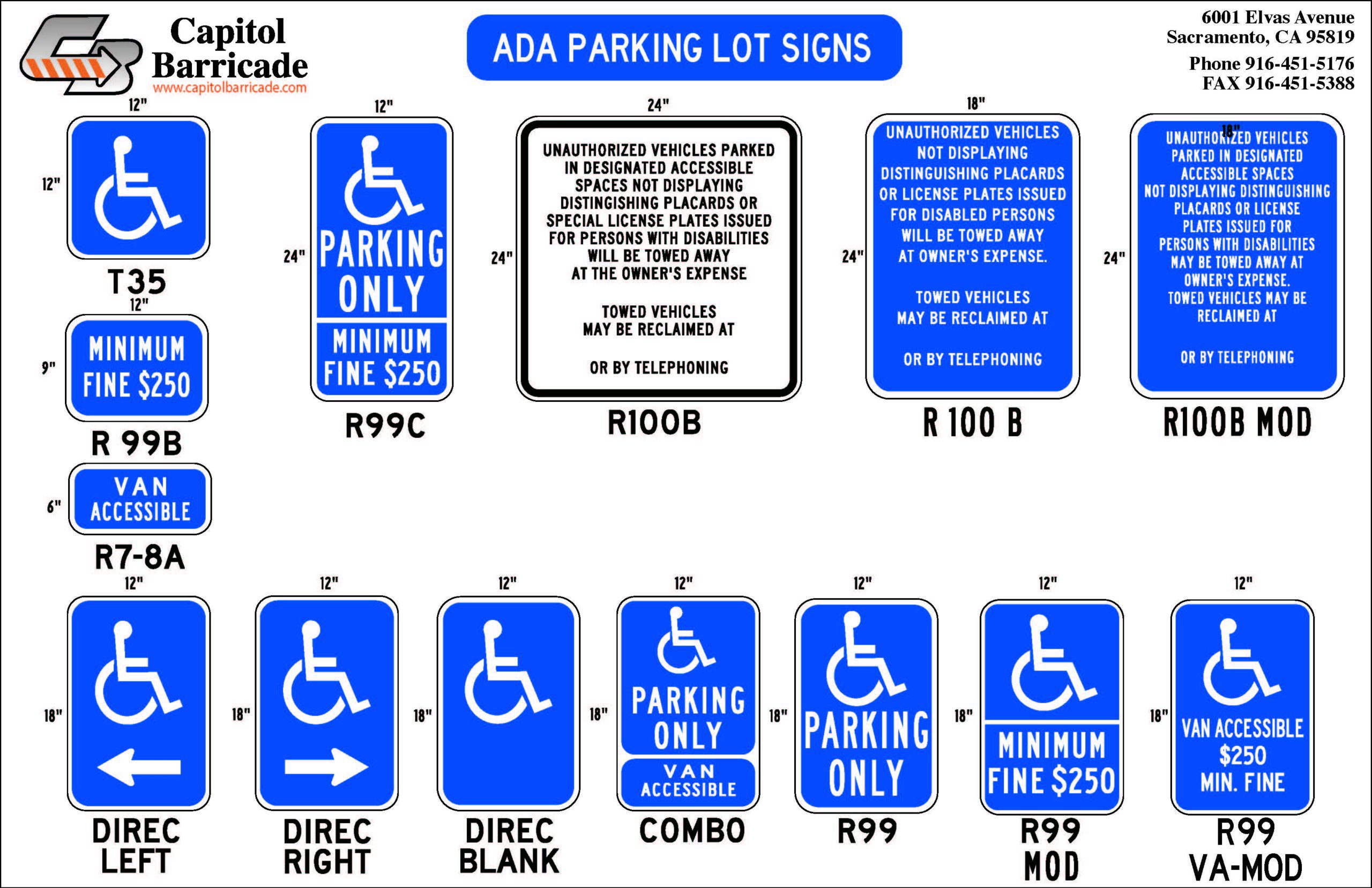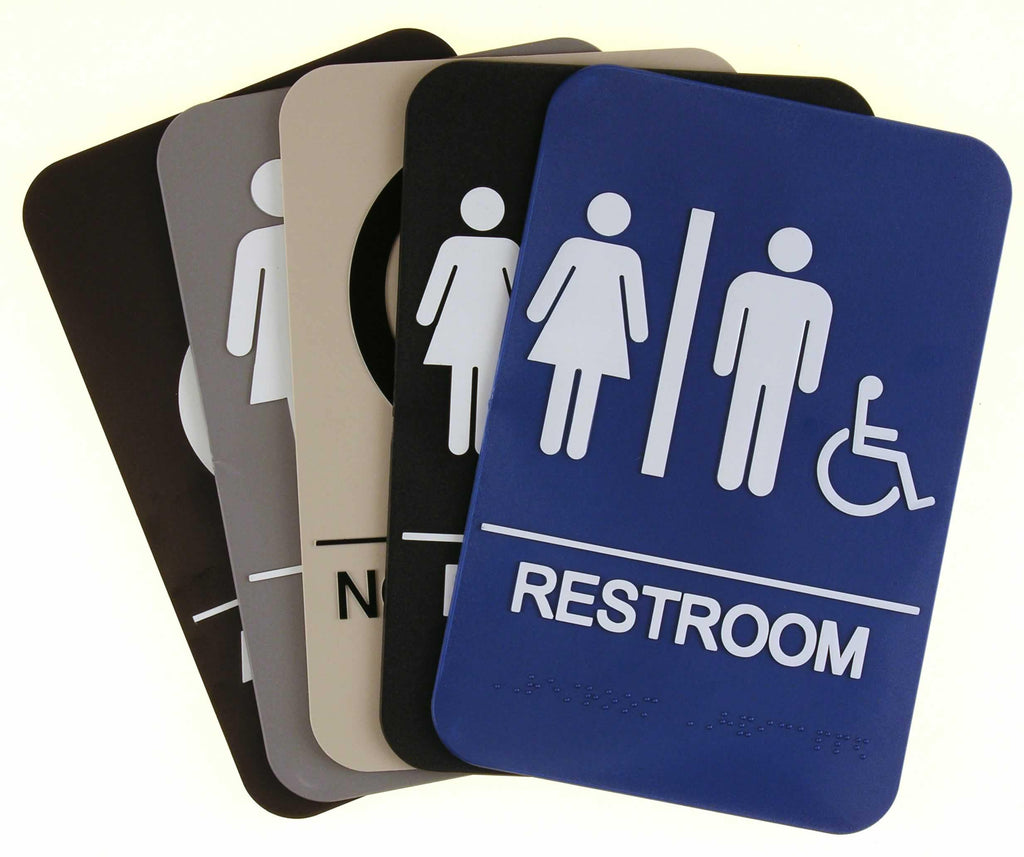Exploring the Key Features of ADA Signs for Enhanced Ease Of Access
In the realm of accessibility, ADA signs function as silent yet effective allies, ensuring that rooms are accessible and comprehensive for individuals with disabilities. By incorporating Braille and responsive aspects, these indications break obstacles for the visually damaged, while high-contrast color design and clear fonts accommodate varied visual needs. In addition, their tactical positioning is not approximate but instead a calculated effort to promote smooth navigation. Yet, beyond these attributes exists a much deeper narrative regarding the development of inclusivity and the recurring dedication to producing fair areas. What extra could these signs signify in our quest of universal access?
Significance of ADA Conformity
Guaranteeing conformity with the Americans with Disabilities Act (ADA) is vital for fostering inclusivity and equal access in public areas and workplaces. The ADA, passed in 1990, mandates that all public facilities, employers, and transport solutions accommodate individuals with specials needs, guaranteeing they take pleasure in the very same legal rights and opportunities as others. Conformity with ADA standards not only satisfies lawful responsibilities yet likewise boosts a company's reputation by showing its dedication to variety and inclusivity.
One of the essential elements of ADA compliance is the execution of obtainable signs. ADA indicators are created to make sure that individuals with impairments can easily browse with structures and areas.
In addition, adhering to ADA laws can minimize the danger of legal effects and prospective penalties. Organizations that fall short to follow ADA guidelines may encounter charges or lawsuits, which can be both economically troublesome and destructive to their public photo. Thus, ADA conformity is important to fostering a fair environment for everybody.
Braille and Tactile Elements
The unification of Braille and responsive elements into ADA signs embodies the concepts of availability and inclusivity. These features are critical for individuals that are blind or aesthetically impaired, enabling them to browse public rooms with higher freedom and confidence. Braille, a tactile writing system, is essential in supplying written info in a layout that can be easily viewed with touch. It is usually positioned below the matching message on signage to make sure that individuals can access the information without visual help.
Tactile components prolong past Braille and consist of elevated signs and personalities. These parts are made to be noticeable by touch, allowing individuals to identify room numbers, restrooms, leaves, and various other essential locations. The ADA establishes certain guidelines regarding the size, spacing, and placement of these tactile components to enhance readability and make sure consistency across various atmospheres.

High-Contrast Color Design
High-contrast color systems play a critical role in boosting the presence and readability of ADA signs for people with visual disabilities. These systems are vital as they make best use of the distinction in light reflectance in between message and history, making certain that signs are quickly noticeable, also from a range. The Americans with Disabilities Act (ADA) mandates using particular color contrasts to suit those with minimal vision, making it a crucial facet of compliance.
The efficacy of high-contrast colors lies in their capability to attract attention in numerous illumination conditions, including poorly lit settings and locations with glow. Usually, dark message on a light history or light text on a dark background is used to accomplish ideal contrast. Black text on a white or yellow history provides a plain aesthetic difference that assists in fast recognition and understanding.

Legible Fonts and Text Size
When thinking about the style of ADA signs, the choice of readable typefaces and ideal message dimension can not be overemphasized. These components are important for making certain that Our site indicators come to individuals with visual impairments. The Americans with Disabilities Act (ADA) mandates that fonts should be Read Full Report sans-serif and not italic, oblique, script, extremely ornamental, or of uncommon form. These requirements aid ensure that the message is conveniently readable from a distance which the personalities are distinct to varied audiences.
According to ADA standards, the minimum message elevation should be 5/8 inch, and it should increase proportionally with checking out distance. Uniformity in text dimension adds to a natural aesthetic experience, assisting individuals in browsing environments efficiently.
In addition, spacing between lines and letters is important to legibility. Appropriate spacing stops characters from appearing crowded, boosting readability. By adhering to these criteria, designers can considerably boost ease of access, making certain that signage offers its designated function for all individuals, no matter their aesthetic capacities.
Efficient Placement Methods
Strategic positioning of ADA signs is vital for making the most of availability and ensuring compliance with lawful requirements. ADA standards state that indications ought to be mounted at an elevation in between 48 to 60 inches from the ground to ensure they are within the line of sight for both standing and seated individuals.
In addition, indicators need to be placed surrounding to the latch side of doors to permit simple identification before access. Consistency in indicator placement throughout a center enhances predictability, minimizing confusion and boosting overall individual experience.

Final Thought
ADA signs play a crucial role in promoting access by integrating functions that resolve the needs of individuals with handicaps. Incorporating Braille and responsive aspects makes sure crucial info comes to the visually damaged, while high-contrast shade schemes and clear sans-serif font styles boost presence throughout different lights conditions. Effective positioning strategies, such as suitable mounting heights and tactical locations, better assist in navigating. These components my link jointly cultivate a comprehensive environment, underscoring the importance of ADA compliance in guaranteeing equal gain access to for all.
In the realm of ease of access, ADA signs offer as quiet yet powerful allies, making certain that rooms are accessible and inclusive for people with impairments. The ADA, established in 1990, mandates that all public facilities, employers, and transport services accommodate individuals with impairments, guaranteeing they appreciate the exact same rights and possibilities as others. ADA Signs. ADA indications are developed to guarantee that people with specials needs can easily browse with buildings and areas. ADA guidelines stipulate that indications should be installed at an elevation between 48 to 60 inches from the ground to guarantee they are within the line of sight for both standing and seated people.ADA signs play an essential function in promoting access by incorporating features that attend to the needs of people with disabilities